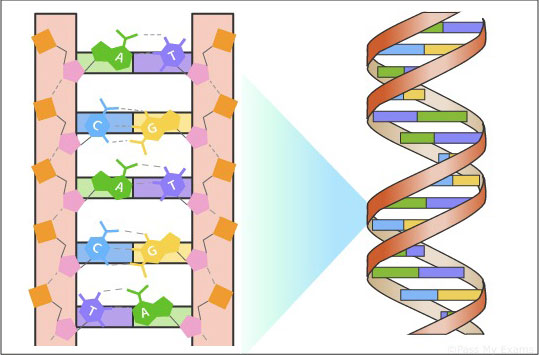DNA – DeoxyriboNucleic Acid
A chromosome is made up of long, coiled up molecule called DNA.
A DNA molecule is made up of thousands of building blocks called nucleotides. Each nucleotide is made up of three parts:
- A phosphate group
- A sugar group
- One of four types of nitrogen bases
The phosphate and sugar group join, and the nitrogen base combines with the sugar group forming a nucleotide. The base pairs from two nucleotides are attracted together via hydrogen bonding. Although hydrogen bonds are weak but because they are thousands of nucleotides, together they form the double helix shaped DNA molecule in which the phosphate a sugar groups form the backbone. In this way a DNA molecule is similar in structure to a ladder in which the sugar and phosphate groups make the uprights and the nitrogen base groups the rungs.
There are four types of nitrogen bases or base groups.
- Adenine (A)
- Thyamine (T)
- Cytosine (C)
- Guanine (G)
The pairing up of these base groups is always the same;
Adenine (A) pairs up with Thyamine (T), and
Cytosine (C) pairs up with Guanine (G)
The Structure of DNA molecule
The animation below shows how the nitrogen base groups pair up to form the DNA molecule.
Animation summary
These are the four base groups in a DNA molecule.
- Adenine (A)
- Cytosine (C)
- Guanine (G)
- Thymine (T)
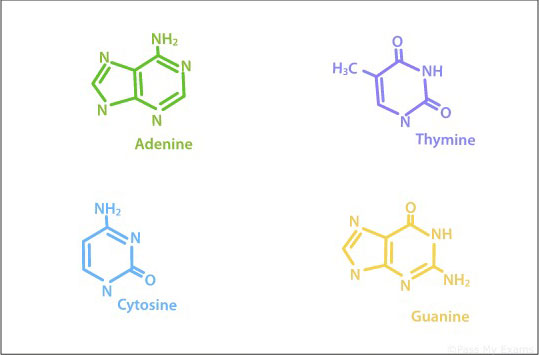
For simplicity, the chemical structures of the base groups are shown as simple shapes and their full names are replaced by the starting letter.
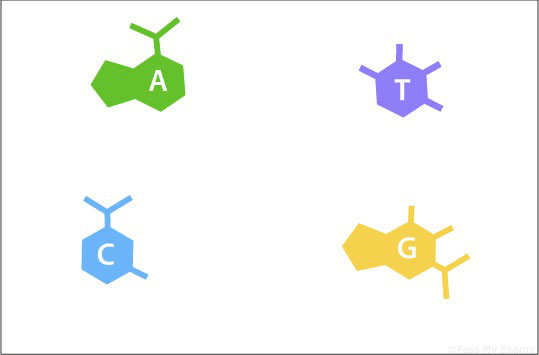
Nucleotides are the building blocks of a DNA molecule. Each nucleotide is made up of a phosphate group linked to a deoxyribose sugar which, in turn, is linked to one of the four nitrogen bases.
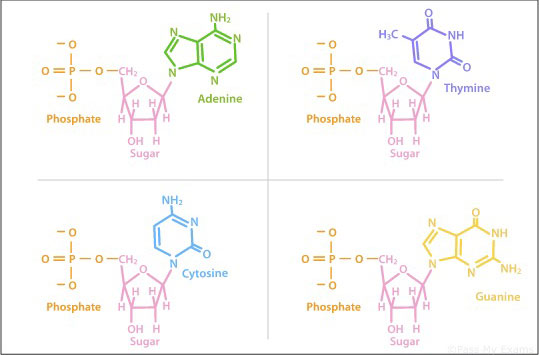
For simplicity, the chemical structures are shown as simple shapes.
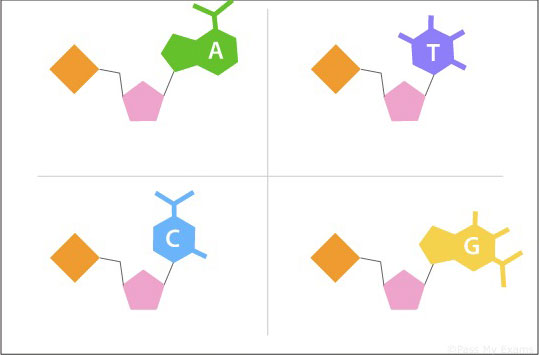
The bases in the nucleotides always pair up in the same way.
Adenine (A) pairs up with Thymine (T)
Cytosine (C) pairs up with Guanine (G)
Each pair is held together by hydrogen bonds.
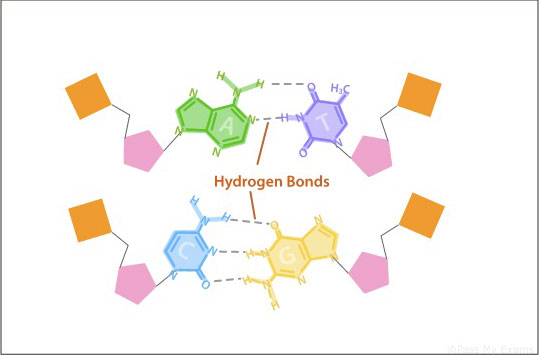
The nucleotides in the DNA molecule are linked in series from one phosphate, to the next sugar, to the next phosphate and so on. The DNA molecule can be considered as a ladder with the phosphate and the sugar molecules making up the uprights and the bases making up the rungs.
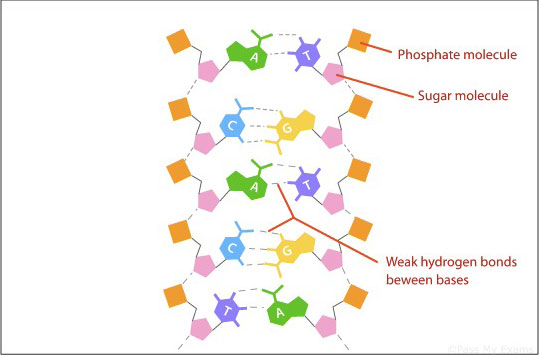
The DNA molecule is a twisted ladder with the phosphate and sugar uprights or rails running in opposite orientation to one another. The structure of the molecule is called a double helix and was discovered in 1953 by James Watson and Francis Crick with the support of Maurice Wilkin and Rosalind Franklin.
